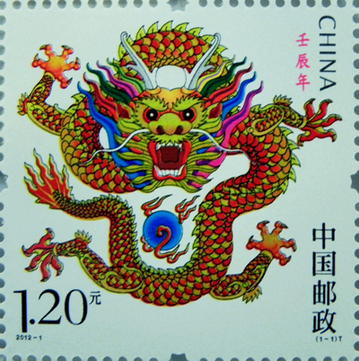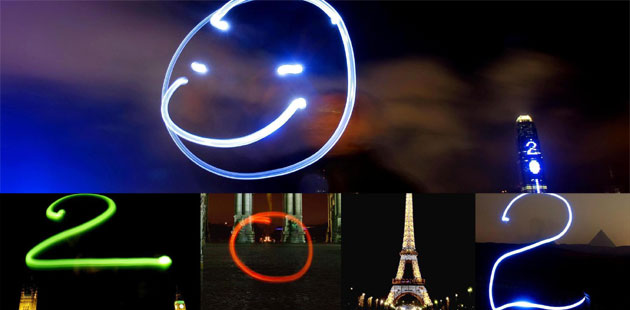Year of Dragon stamp raises debate
Updated: 2012-01-04 10:45
(Xinhua)
|
|||||||||
BEIJING - A set of stamps to mark the Year of the Dragon, slated for sales beginning Thursday, has aroused heated debate on the image of the legendary creature after China Post unveiled the design of the stamp.
"The moment I saw the design of the dragon stamp on newspaper, I was almost scared to death," Zhang Yihe, a noted writer said in her post on weibo.com, China's Twitter-like social networking service and microblogging service provider, on Tuesday.
 |
|
Photo taken on Jan 3, 2011 shows a dragon stamp to be released to mark the Year of the Dragon. [Photo/Xinhua] |
"It is roaring and intimidating," read another.
Few mythological beasts could better arouse a national debate in China than the dragon, because Chinese believe they are descendants of the legendary creature.
The stamp for the Year of the Dragon, the third set of its kind issued by China Post since 1949, used a make-up that was close to China's first stamp in 1878 during the Qing Dynasty when emperors still reigned the country.
For thousands of years, the Chinese have named each year after an animal in a 12-year cycle. The dragon ranks fifth in the cycle, after the mouse, ox, tiger and rabbit, but before snake, horse, goat, monkey, rooster, dog, and pig. 2012 is the Year of the Dragon.
Dragons are traditionally considered to symbolize auspicious powers in China with their control over water, rainfall, hurricane, and floods. Emperors in ancient China used the dragon as a totem of the imperial power.
Chen Shaohua, designer of the new stamp, upheld his work, saying the dragon should not be too gentle in image otherwise it does not fit the portraits of dragon in the minds of most Chinese.
"Dragon is the deity of the 12 animals in the Chinese Zodiac, and you can't modernize the creature like cartoons," said Chen, who once designed the emblem of Beijing's bidding for the 2008 Olympic Games.
"Among the civilian people, dragon can exorcise evil spirits, avoid disasters and bless people, so we need a tough image," Chen said.
Feng Shula, manager of the circulation department of China Post, defended Chen's design, saying the image of the dragon is exactly what it should look like, based on the references to the dragon robe worn by emperors in ancient China and the Nine-Dragon Wall in the Forbidden City in Beijing.
"From this perspective, the new dragon stamp is a perfect combination of history and modern time," Feng said.
To Zhou Zhihua, president of All-China Philatelic Federation, the discomfort at the 2012 dragon stamp among some people is understandable, given an image that is far different from the prior two sets of dragon stamps.
The first set of dragon stamp issued in 1988 abandoned the awe-inspiring looking for the legendary creature and used the Chinese traditional paper-cutting art to soften its appearance. Another dragon stamp issued in 2000 combined the traditional Chinese calligraphy and the dragon pattern of the Qin (221 BC - 206 BC)and Han (206 BC -220) dynasties in design and gave a graceful exterior for the dragon.
Despite the controversy, the new dragon stamp is set to bring good fortune to some people in the country.
At Madian, a philatelic market in downtown Beijing, the new set of dragon stamps have been overbooked at prices much higher than its face value of 24 yuan ($3.8).
"All my quota for subscription have been booked and some collectors even asked for one set of the dragon stamps at 180 yuan each," said Li Wei, a stamp and coins seller at the market.
"I hope the thriving can bode well for the full-year this year, " he said.
- Measures to boost buying amid export decline
- China protests islands visit by Japan
- China to play greater role in 2012
- China axes TV entertainment shows
- New Year's art starts controversy
- Taliban to set up office in Qatar
- Man used fake Wendi Deng Twitter
- CPI to ease further this year despite inflation
Hot Topics
Kim Jong-il, Mengniu, train crash probe, Vaclav Havel, New Year, coast guard death, Internet security, Mekong River, Strait of Hormuz, economic work conference
Editor's Picks

|

|

|

|

|

|






